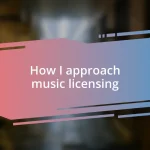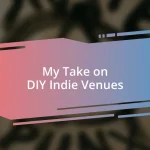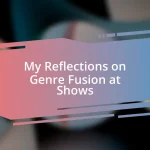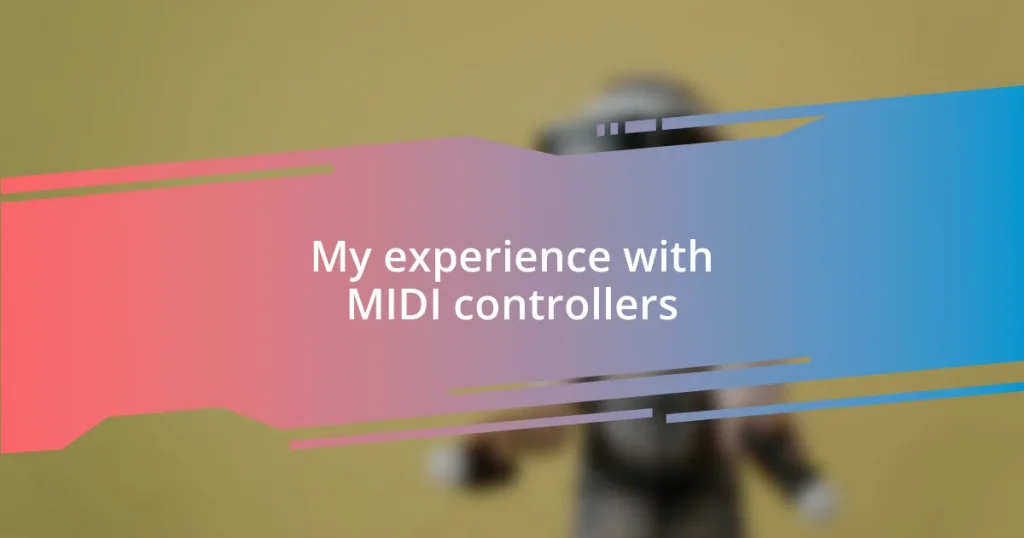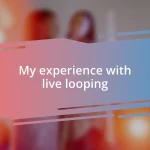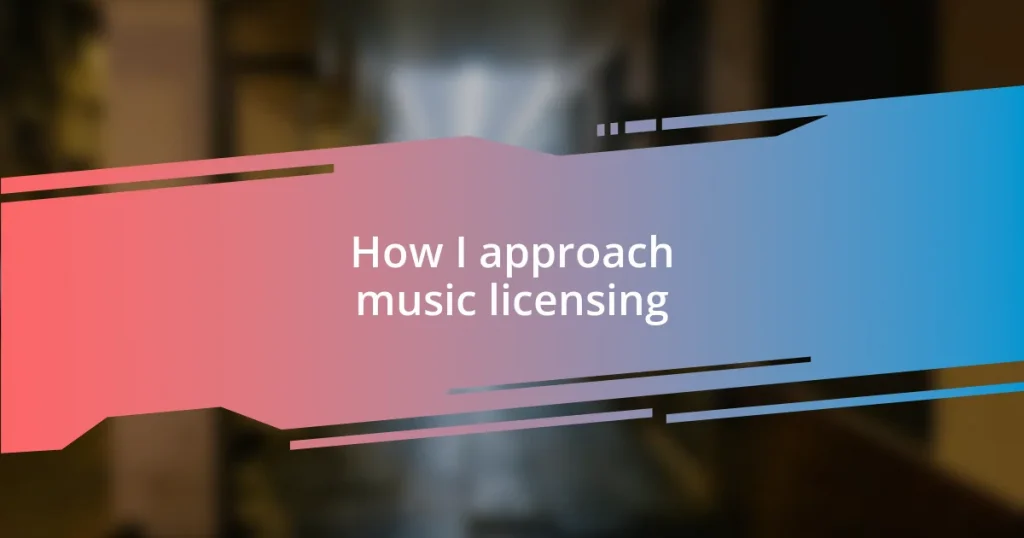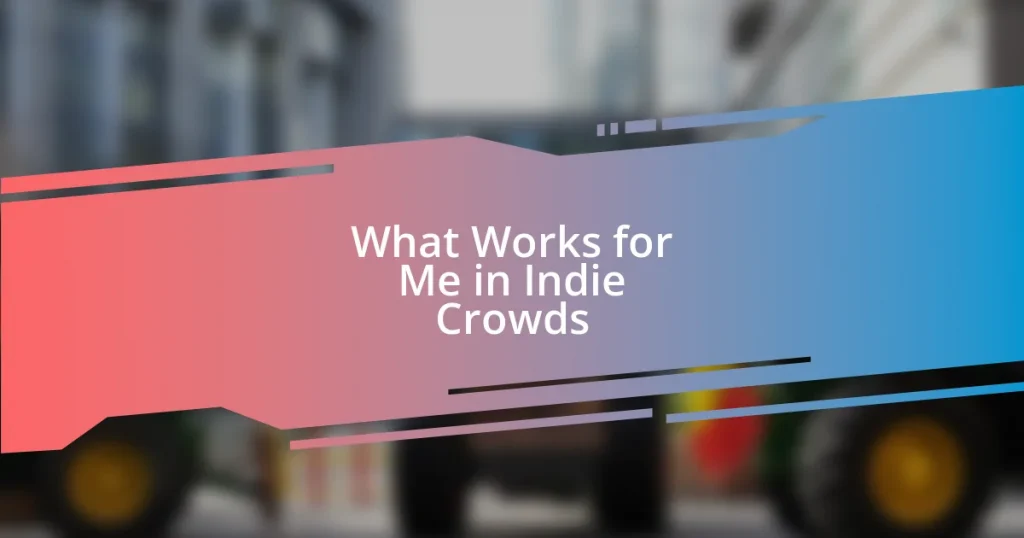Key takeaways:
- MIDI controllers enhance musical creativity by allowing intuitive interaction with software and hardware, transforming simple actions into complex sound manipulations.
- Choosing the right MIDI controller involves considering factors like portability, type, software compatibility, build quality, and customization options tailored to individual workflows.
- Overcoming challenges such as latency and feature overload can be managed through optimization techniques and focusing on mastering essential functions, which in turn boosts the creative process.
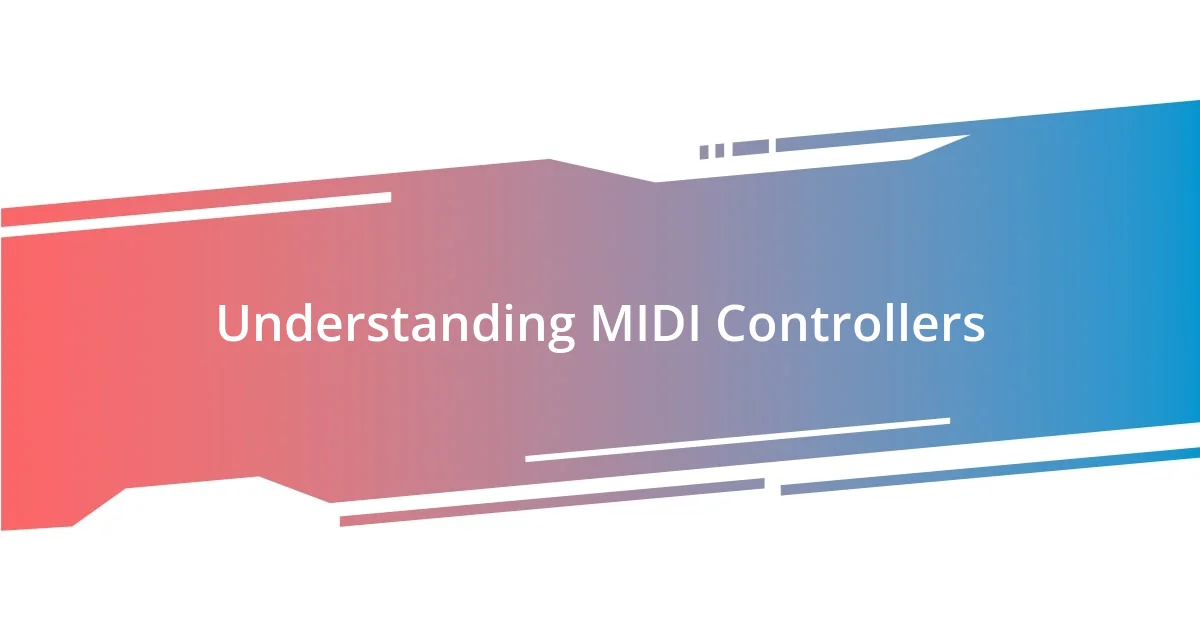
Understanding MIDI Controllers
MIDI controllers transform the way we create music by allowing us to interact with software and hardware in an intuitive manner. I remember the first time I connected my MIDI keyboard to a digital audio workstation (DAW); it felt like unlocking a new dimension of musical expression. It’s fascinating to think about how a simple press of a key translates into a world of sound possibilities.
When considering the variety of MIDI controllers available, I often wonder: how do you decide which one is right for you? The options can be overwhelming, from pads and knobs to full-fledged keyboards, each designed to cater to different creative processes. For me, finding the right controller was all about experimentation. I tried several before landing on one that complemented my workflow perfectly.
Have you ever felt the thrill of creating a beat with just a few taps? That’s the beauty of MIDI controllers—the immediate gratification of seeing your ideas come to life. They don’t just serve as tools; they become an extension of our creativity. Each session with my controller feels like a collaborative jam, where I’m not just playing notes, but sculpting sounds into something uniquely mine.
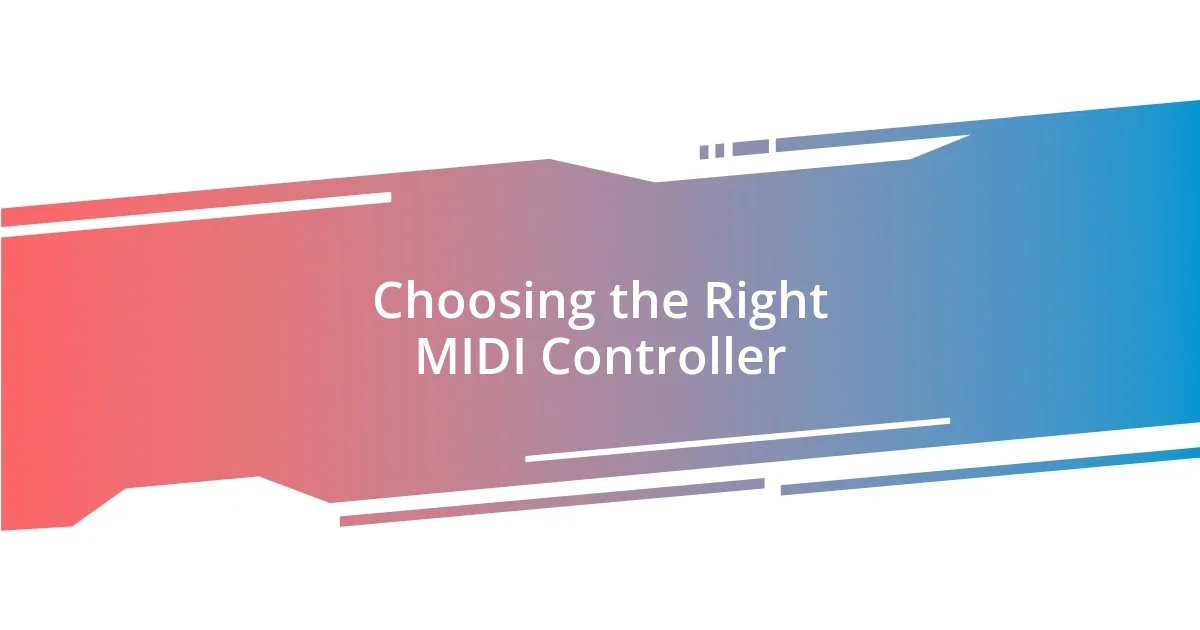
Choosing the Right MIDI Controller
Choosing the right MIDI controller can be quite the journey. Initially, I was drawn to the allure of sleek designs and flashy features, but soon realized that functionality is what truly matters. For instance, I discovered that pads were essential for my live performances, as I love to create on the fly, but I also needed keys for composing complex melodies in my studio.
Here are some key points to consider when selecting your MIDI controller:
- Portability: If you travel often, a lightweight controller that fits easily into your gear bag is crucial.
- Type of Controller: Decide if you want pads, keys, or a hybrid style to match your preferred playing technique.
- Software Compatibility: Ensure your controller seamlessly integrates with your DAW, avoiding headaches down the line.
- Build Quality: I once struggled with a flimsy controller; investing in something durable makes a huge difference in performance consistency.
- Customization Options: Having the ability to map controls to specific functions in your software truly enhances your creative process.
Ultimately, it’s about finding that perfect match that feels uniquely yours, allowing you to express your musical ideas with ease and confidence.
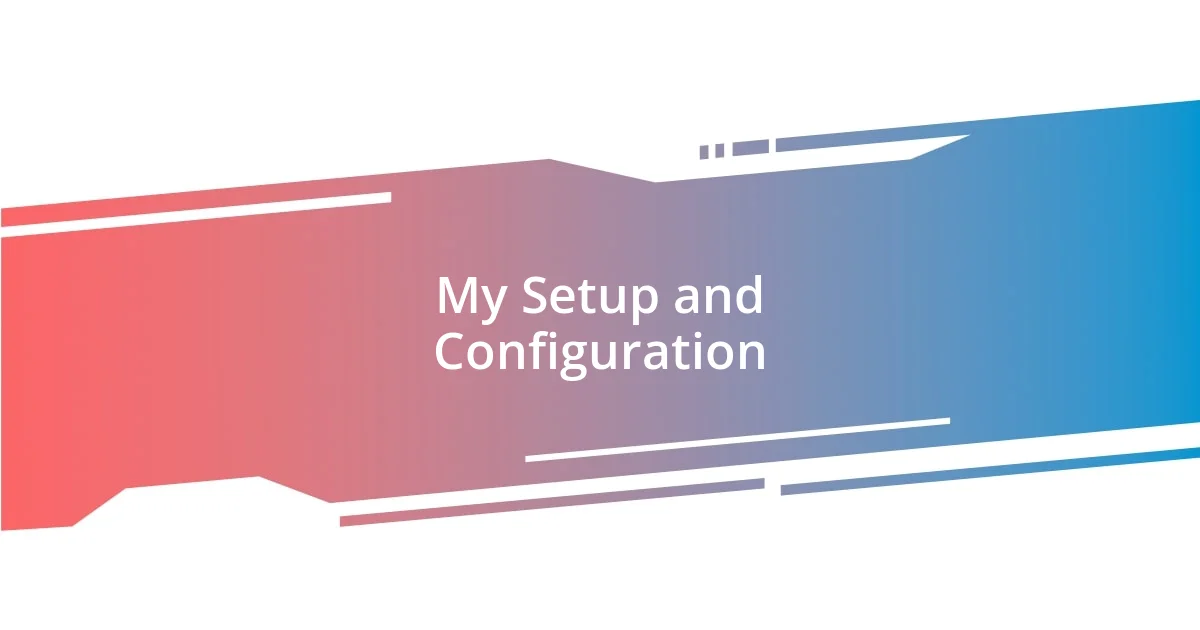
My Setup and Configuration
My setup revolves around a MIDI keyboard, which I’ve customized over time to match my workflow. Initially, I went with a popular model, but as I began working more extensively with MIDI, I realized I needed additional controls. So, I added a MIDI pad controller that allows me to easily trigger samples, transforming my creative output. This combination has changed the way I interact with my DAW; every session feels like I’m co-creating with my instruments rather than just pressing buttons.
Configuration is key to getting the most out of your MIDI controllers. I spent countless hours mapping my keyboard and pads to specific functions in my software. It was a tedious process, yet it breathed new life into my projects. Now, with the touch of a button, I can switch between different instruments, effects, or recording modes seamlessly. The joy I feel when everything clicks into place is indescribable—it’s akin to being the conductor of my own orchestra.
| Controller Type | Key Features |
|---|---|
| MIDI Keyboard | Weighted keys, velocity sensitivity, pitch bend wheel |
| MIDI Pad Controller | Velocity-sensitive pads, customizable assignments, RGB lighting |
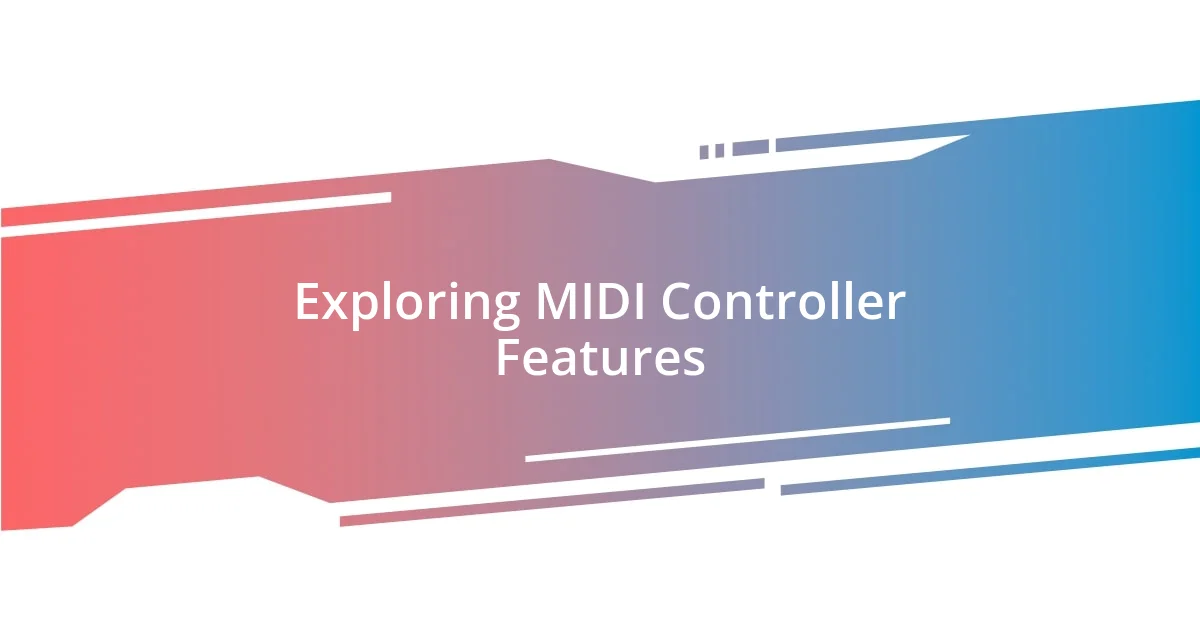
Exploring MIDI Controller Features
Exploring MIDI controllers reveals a world filled with features that can greatly enhance your music-making experience. When I first delved into this realm, I was captivated by the variety of knobs and faders available on many controllers. Did you know that having the ability to tweak parameters in real-time can truly elevate your performance? I remember using a pot for modulation during a live set, and the intuitive control helped me connect with my audience in a way I hadn’t anticipated.
Another standout feature I found invaluable is the ability to program and customize pads. Initially, I thought I would only use them for triggering samples, but I’ve experimented with layering sounds in a live context as well. This versatility allowed me to develop a unique sound—one reflective of my artistic identity. What if you could shape your sound on the fly? This flexibility not only makes performances more dynamic but also unleashes creativity that can lead to extraordinary moments in your music.
Finally, let’s talk about integration with software. I recall feeling frustrated when my previous controllers offered limited compatibility. Once I switched to a MIDI controller that worked seamlessly with my DAW, my entire workflow transformed. Suddenly, I was able to focus on the music instead of wrestling with technology. I can’t stress enough the importance of ensuring your controller pairs well with the software you love. It can truly make or break the creative process and turn a stressful session into a joyful experience.
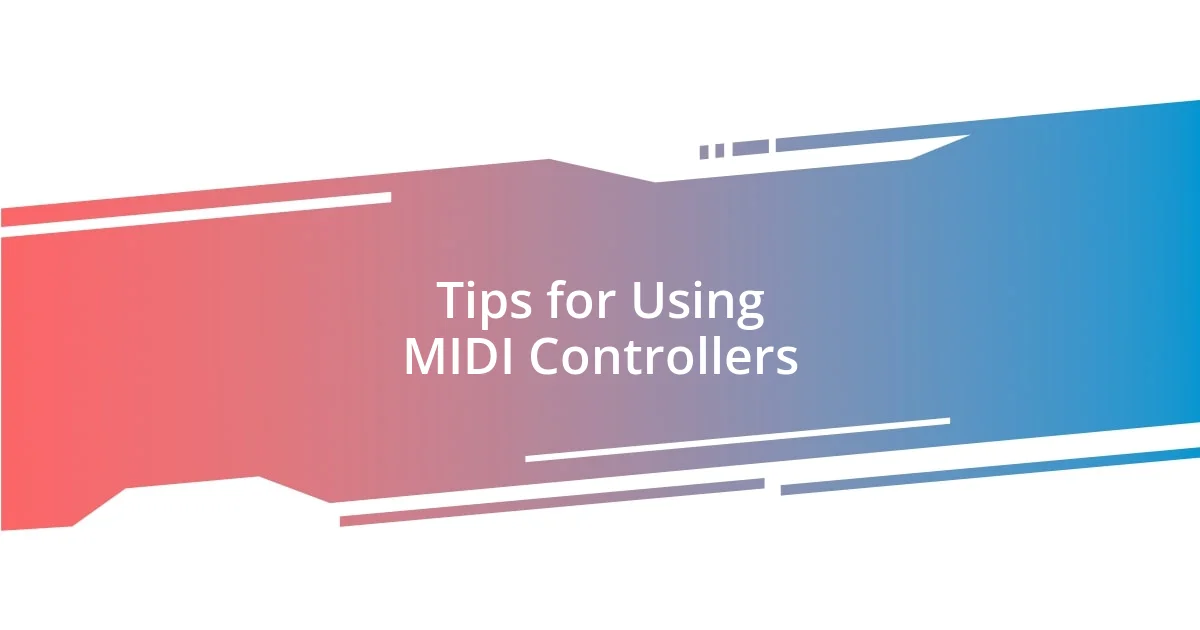
Tips for Using MIDI Controllers
When using MIDI controllers, always take the time to familiarize yourself with their features. I remember sitting down with mine for a full afternoon, simply playing around with the knobs and pads. That exploration opened my eyes to the possibilities and the creative techniques I hadn’t even considered before. Why rush the process when a little experimentation can lead to breakout moments in your music?
A solid tip I can share is the importance of creating templates tailored to your most common setups. I’ve crafted templates for different genres, and it’s made my workflow so much more efficient. Imagine not having to start from scratch every time you open your DAW! Setting up controls ahead of a session means you can dive straight into creating instead of wasting time adjusting settings.
Another practical suggestion is to keep your MIDI controller accessible at all times. I learned this the hard way after a few too many late-night inspiration bursts led to me scrambling to set everything up. Having your controller ready and within reach means you can capture those fleeting ideas before they slip away. Isn’t it frustrating to lose a great musical thought simply because you weren’t prepared? By committing to readiness, you’ll start to see your creative output soar.

Common Challenges and Solutions
Common challenges often arise when working with MIDI controllers, and one that I’ve faced is dealing with latency. There were moments during live performances when I felt an awkward delay between triggering a sound and hearing it. Frustrating, right? To solve this, I invested time in optimizing my audio settings and using a dedicated audio interface, which significantly reduced the lag and enhanced my performance. The difference was night and day!
Another issue I encountered was the overwhelming number of features and options on some controllers. At first, it felt like I was trying to navigate a complex spaceship control panel. I learned that the key is to focus on mastering a few essential functions that you plan to use regularly rather than getting bogged down in everything at once. Breaking things down into smaller practice sessions not only made it manageable but also helped me gain confidence. Have you ever felt lost among endless settings? Trust me, simplifying your approach can lead to much more enjoyable music creation.
Finally, I’ve struggled with binding certain features to my workflow seamlessly. For example, when I attempted to map knobs to effects but ended up with unexpected results. I realized that thorough documentation and online tutorials can be lifesavers. I often refer back to these resources when I hit roadblocks, ensuring a smoother experience. Isn’t it reassuring to know that a solution is just a few clicks away? Embracing these resources helped me overcome obstacles and ultimately enhanced my creativity.
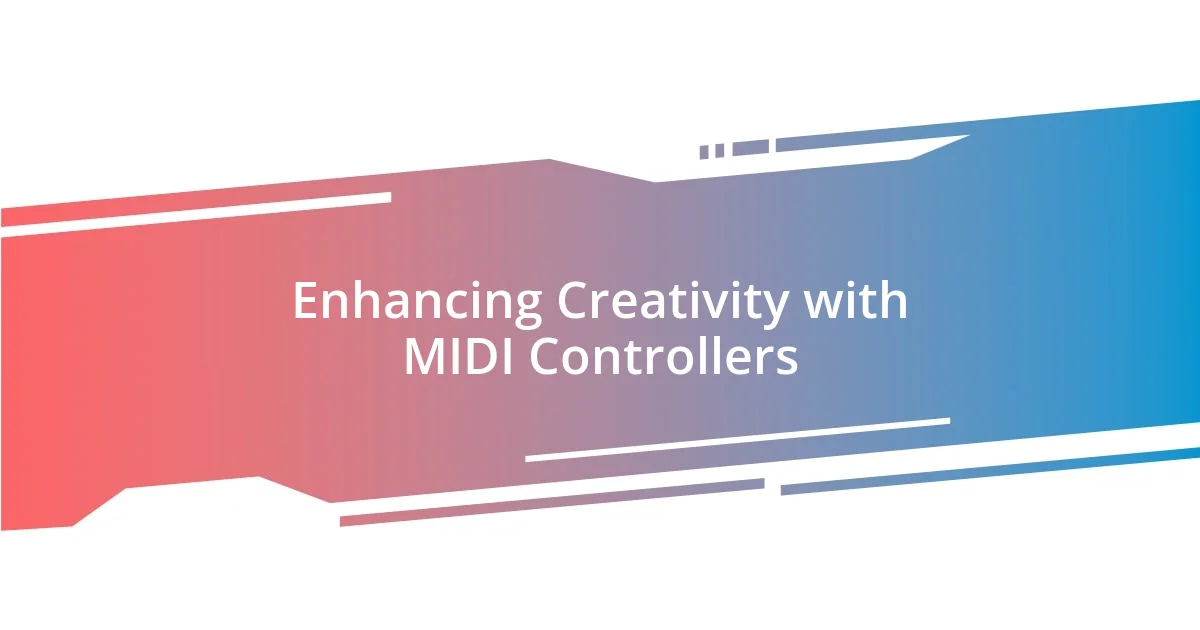
Enhancing Creativity with MIDI Controllers
One of the most exhilarating aspects of using MIDI controllers is the sheer freedom they provide for creativity. I still remember the first time I connected mine to my DAW. As I pressed a pad, a world of sound unfolded before me—each touch sparked a new idea. Have you ever felt that rush of inspiration? It’s truly amazing how a swipe or tap can lead to unexpected melodies, turning a simple thought into a full-fledged composition. Sometimes, I find myself getting lost in this sonic playground, and that’s where the magic happens.
Working with different MIDI controllers has also taught me how varying devices can invoke different creative moods. I once tried a sequencer that had a unique arpeggiator function. At first, I was skeptical, feeling overwhelmed by the unfamiliar interface. However, once I embraced it, the patterns I created felt like they were flowing from a new part of my brain. Have you ever discovered something unexpectedly inspiring? It’s like finding an unexplored avenue in a familiar city. These little revelations have a significant impact on my artistry.
Lastly, I’ve found that collaborating with others while using MIDI controllers can amplify creativity tenfold. I recall a session where a friend and I jammed together, trading beats and ideas on our controllers. Something about bouncing inspiration off one another unleashed an energy I hadn’t expected. Have you ever experienced that spark during a creative dialogue? It’s these collaborations that can transform simple loops into a rich tapestry of sound, deepening not just the music but also the connection we share as creative individuals.
